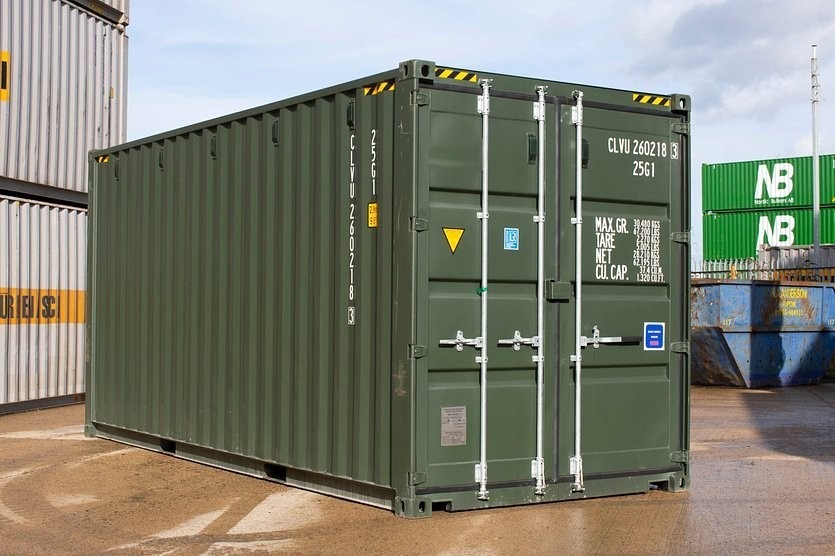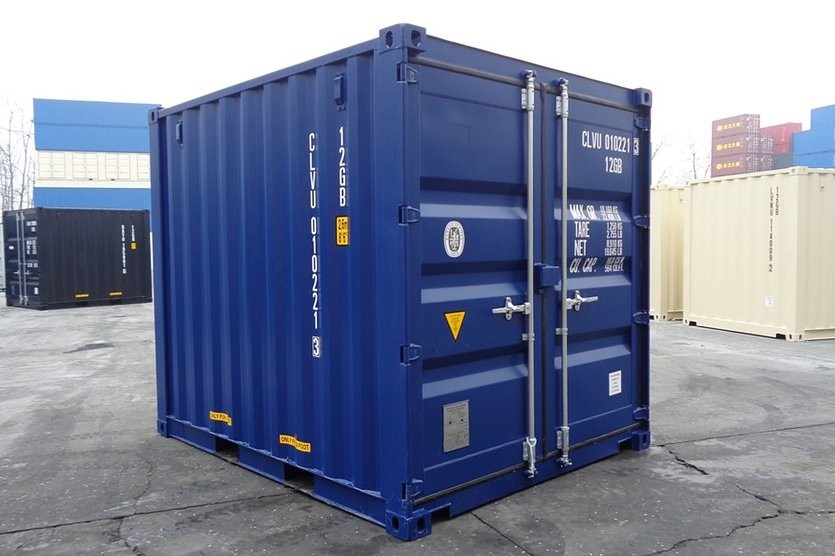The 10 Most Scariest Things About Offshore Containers
페이지 정보
작성자 Alva 작성일25-02-21 10:37 조회4회 댓글0건관련링크
본문
 Offshore Containers
Offshore Containers Offshore containers are robust shipping container hire uk units that are used to transport equipment, materials and other supplies to offshore locations. These containers must adhere strictly to the standards of manufacturing and must meet DNV 2.7-1 safety rating.
Offshore containers are robust shipping container hire uk units that are used to transport equipment, materials and other supplies to offshore locations. These containers must adhere strictly to the standards of manufacturing and must meet DNV 2.7-1 safety rating.They must also go through rigorous inspections for structural blueprint examination, welding inspections and production process inspections. This ensures they can handle different loading and unloading force.
Standardization
Just as there are standards in place to help shipping containers be able to withstand different environments and serve diverse requirements, offshore containers must also meet certain standardization requirements in order to ensure that the risk of damage or accidents to the minimum. These requirements differ based on how the container is used, but the overall goal is to keep design of these structures at a minimum and to ensure that they are easily transported, repaired, and reused.
Offshore containers are often shipped and transferred between vessels, rigs, and other locations that are associated with the oil industry at sea. They are subjected to rigorous tests and inspections throughout their useful life and must adhere to certain strict guidelines that ensure their safety and durability. This allows for safe and efficient transport as well as storage and handling of equipment that is sensitive without compromising the integrity of the goods inside.
The containers must also be able to stand visit Botdb up to dynamic lifting with padeyes and a DNV-certified lifting sling equipped with shackles, as well as external forces like wind, wave and currents that could cause damage to the structure during operation. Offshore containers are constructed according to the DNV standard for certification 2.7-1 which specifies stringent criteria for their structural integrity and strength.
In the late 90s, the Maritime Safety Committee (the highest technical body of the International Maritime Organization, who publishes the IMDG code, CSC regulations and is the sole holder of the SOLAS convention) in the late 90s, the Maritime Safety Committee (the highest technical body within the IMO MSC Circular 860 which provides basic design and approval requirements for Offshore Containers that are handled on open seas. This was a significant publication as it clearly distinguished between the calculations for design and the actual verification of Offshore Containers.
Today, most Offshore Containers are designed to ISO 10855 which is an ISO-approved global standard for the design and construction of portable offshore units, with special considerations for their loading and unloading. This is based on DNV 2.7-1 and EN 12079 as well as the current MSC Circular 860. This standard ensures all shipments and transfer are handled in the most reliable manner possible, while ensuring the units remain at a level of safety that is always assured by DNV. Uniteam Reefer was designed according to these standards. This puts the highest emphasis on safety, and contributes towards seamless operations in our industry.
Durability
Offshore Refrigerated Containers are built to withstand the most extreme conditions at sea. Contrary to conventional shipping containers which are usually made of low-grade steel, offshore Confined Space Containers are made from corrosion-resistant materials, such as carbon-manganese and strong aluminum alloys. They are therefore more durable and last longer than their counterparts. These aspects are crucial for the safe storage and transportation of tools, equipment, and other supplies in harsh marine environments.
To ensure safety and compliance, offshore containers must meet stringent manufacturing standards. They must be in compliance with DNV 2.7-1 standards which are extremely stringent and regulate the design, manufacture and testing, marking and marking of offshore containers. In addition, they should be regularly inspected to ensure their structural integrity and safety features.
In the offshore industry, there are many different types of offshore containers available. Some are modified to serve as accommodation for staff while others are converted into workshops and maintenance facilities. There are containers that are designed to store and transport of hazardous materials. These containers must meet strict environmental regulations. They are therefore specially designed and constructed to provide corrosion resistance as well as other features that safeguard the environment.
When selecting a container, there are a variety of aspects to take into consideration such as the size, weight, and expandability of the contents. Additionally, it's important to assess the weather conditions that the container will encounter in order to determine the strength of the structure. If the container is likely to be exposed to extreme saltwater or cold temperatures, it might need to be insulated or coated with specific materials.
Another aspect to consider is the type of equipment to be stored or transported in the container. For instance, there are a variety of sizes of offshore Refrigerated Containers that can be used to transport pipes or other heavy equipment. These containers can be modified by adding racks or shelves to facilitate loading and unloading equipment less difficult. They can also be equipped with air conditioning and ventilation systems to provide an environment that is comfortable for personnel. There are also offshore containers made for the purpose of transporting and storing chemicals. These containers are insulated and coated with special materials that protect against chemical damage and corrosion.
Safety
Offshore containers are constructed with security in mind. They come with robust locks and tamper-proof seals. Standard dimensions and specifications make them compatible with various transportation methods, and cut down on costs associated with logistics as well as the time it takes to load and [Redirect Only] unload. They can be adapted for specific uses, such as Offices And Studios Containers or control rooms that are portable to meet the needs of different projects. Additionally, offshore containers are built to the highest standards of industry and regulations, which ensure compliance with international shipping and environmental regulations.
Since they are lifted over the ocean to offshore structures offshore containers must be able to endure extreme conditions at sea. This includes rough weather conditions, rogue wave action and a relentless corrosion-inducing salt spray. These containers are made from premium, durable materials that ensure longevity and functionality in the most challenging conditions.
They're constructed according to a strict, rigorous standard - DNV 2.7-1 that covers every aspect of the design, manufacture testing, marking and inspection of offshore containers. This standard, in conjunction with the IMO Maritime Safety Committee's (MSC) Regulation 860-, helps to prevent accidents and ensure that vessels, offshore structures and containers comply with a range of crucial safety requirements to protect the lives of people at sea.
During the process of production each container must go through an extensive inspection. This includes checking that the lift lugs and fillet welds are fully penetrated and certified. Inspectors are required to perform ultrasonic flaw identification on all structural welds which bear loads, as well as all fork grooves and pads eyes. This is a key step in certifying and approval of offshore containers, because it minimizes the chance of defects during operation and ensures the security of crew members.
Because offshore containers are hoisted at a single location, they're subject to much larger impacts and are prone to collide with adjacent boxes and hulls. This is why they need to be constructed using high-quality, impact-resistant materials like Q345D and Q345E low-alloy steel.
In addition to making sure that the safety of crew members, regular inspections help reduce the amount of time that operations are down. This is because they can detect any issues early which allows for quick repair or replacement, as well as improving overall efficiency.
Customisation
If you're involved in the oil and gas industry, you'll need an container that can withstand extreme offshore conditions. You should locate a company that has a strong understanding of modular construction, and can modify containers for your specific requirements.
Apart from offering a safe work environment A good offshore container must be durable and weatherproof. It should also comply with strict safety standards such as DNV 2.7-1 and be constructed of high-quality materials, like COR-TEN steel. It should also be equipped with anti-corrosion coatings to endure extreme saltwater exposure and harsh environments.
Shipping containers are used to transport equipment and other supplies to oil drilling rigs. They're designed to withstand harsh offshore conditions, including heavy winds and rough seas. They're equipped with locks and tamper-proof seals that ensure the security of the cargo. This makes them a good option for offshore locations, reducing the risk of theft and damage. They're built according to standard dimensions and specifications which makes them compatible with a variety of transportation methods like helicopters and supply vessels.
ACE Container’s team of professionals will analyze your specific requirements to determine the most suitable container for your project. Then, they'll design a detailed plan that takes into consideration your preferences as well as any structural changes that are required. Once you've approved the blueprint, they'll begin building your container.
Offshore containers are often transformed into temporary housing units for workers on board oil rigs as well as other marine installations. They can be equipped with showers, beds toilets, toilets and other facilities to provide workers with an environment that is safe and comfortable. They can also be modified into workshop containers to facilitate maintenance and repair activities.
Offshore containers are designed to withstand the harsh conditions of offshore and are often equipped with storage systems that keep the contents safe and safe. They are also fitted with electrical components that allow the operation of machinery and equipment on offshore installations. They can also be modified to house tools and equipment for repairs and maintenance. They are also equipped with ventilation and power to ensure secure working conditions.
댓글목록
등록된 댓글이 없습니다.






